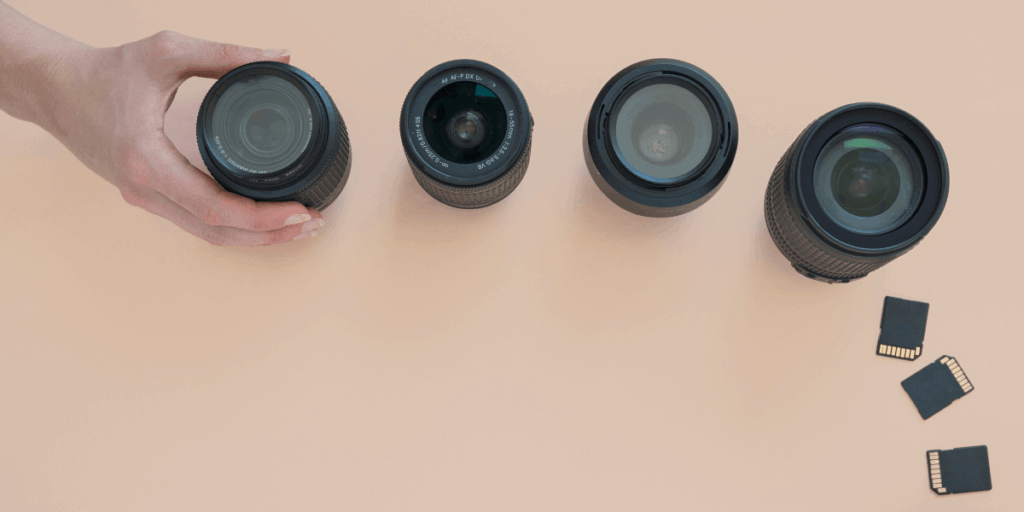- Camera
- Camera Lenses
- Camera Gimbals
- Camera Accessories
- Abs Flight Case
- Articulated Magic Arm
- Bag Case
- Batteries Power
- Blackmagic Accessories
- Camera Carry Strap
- Camera Dry Box
- Cleaning Kit
- Cups
- Dji Accessories
- Filters Accessories
- Flash Diffuser
- Gopro Accessories
- Insta360 Accessories
- Laptop Accessories
- Lens Hoods Caps
- Memory Cards
- Micro Photography
- Tripods Support
- Drone Camera
- Video Lights
- Lighting & Studio Accessories
- Pro Audio
- Studio Production
- Mobile Gimbal
- Gaming Consoles
- Apple Macbook
- Top Selling
Essential Camera Lenses for Travel Photography

In travel photography, your lens is as crucial as your camera body. If you are capturing stunning landscapes in Hunza, vibrant streets in Lahore, or incredible architecture in Istanbul, choosing the right lens is vital. Beginners and intermediates often wonder what lens to take when traveling. There’s no one-size-fits-all, but with knowledge, you can assemble a kit that suits your travel goals.
The Best Types of Lenses for Travel Photography
Continue reading to learn about choosing the right lens for travel photography:
1. Standard Zoom Lens (24-70mm)
If you’re only taking one lens with you, make it a standard zoom. A 24-70mm lens provides versatility for shooting broad cityscapes or zooming in for portraits and street scenes. It’s an all-in-one solution that offers a balance between wide-angle and short telephoto.
● Great for landscapes, portraits, and cityscapes
● Ideal for: DSLR and mirrorless systems
● Use f/2.8 for low-light shooting.
2. Wide-angle Lens (16-35mm or 10-18mm)
Wide-angle lenses are must-haves for travelers who love capturing dramatic landscapes or stunning architecture. A 16-35mm lens on a full-frame camera or a 10-18mm lens on a crop sensor will allow you to fit more into your frame without having to step back.
● Great for mountains, architecture, and interiors
● Lightweight versions are available for travel ease
● Watch out for distortion at the edges; it is easily correctable in the post.
3. Telephoto Lens (70-200mm or 55-250mm)
If you’re visiting wildlife parks or attending events where you can’t get physically close, a telephoto lens is your best friend. While they are heavier than other types, newer versions are surprisingly compact.
● Great for: safari, sports, candid street shots
● The DSLR travel lens buying guide recommends an f/4 version for weight balance
● Consider using lens hoods for better contrast in daylight.
Prime vs Zoom: What’s Better for Travel?
Discover the differences between prime and zoom lenses and find out which one is better for your travels.
Prime Lenses (35mm, 50mm)
Prime lenses don’t zoom, but they offer stunning image quality and perform well in low light. A 35mm or 50mm lens is small, lightweight, and perfect for walking around city markets or historic sites.
● Great for low-light, street, and environmental portraits
● Usually come with wider apertures like f/1.8 or f/1.4
● Affordable choices for beginners
Zoom Lenses (18-135mm, 24-105mm)
Zoom lenses offer unmatched flexibility. With one lens, you can capture landscapes, portraits, and even distant details. That’s why zooms are often at the top of any how-to-choose travel lens checklist.
● Great for travelers who want to pack light
● Helps avoid lens changes in dusty or risky environments
● Consider: A weather-sealed version for unpredictable conditions
Lens Weight and Portability
When you’re constantly on the move, if you are hiking to Fairy Meadows or exploring the streets of Multan, the weight of your gear becomes a significant concern. A heavy lens might provide excellent image quality, but it also adds to fatigue. That’s where compact mirrorless lenses or pancake lenses shine.
● Pro tip: Stick to a two-lens combo, one wide, one zoom
● Use padded but lightweight camera bags for protection
● Prioritize lenses that serve multiple purposes
Travel Photography Lens Tips for Better Shots
Check out these travel photography lens tips that can help you capture even better shots with ease!
1. Use Lens Filters
Carry a UV or polarizing filter. It’ll protect your lens and help with reflections and contrast, which is especially useful when shooting water or glass.
2. Don’t Over-Pack
Many beginners overestimate what they’ll need. Choose 2–3 lenses that cover a wide focal range. That’s the key to an efficient and enjoyable trip.
3. Clean Lenses Frequently
Dust, especially in desert or mountain areas, can ruin your shots. Carry a microfiber cloth and an air blower to clean your lenses regularly.
4. Practice Before You Travel
If you’ve just bought a new lens, test it before your trip. Learn its sweet spot, check how it handles in low light, and test its autofocus speed.
Popular Travel Lenses Available in Pakistan
If you’re based in Pakistan and wondering what to get, here are some budget-friendly and travel-friendly options:
● Canon EF-S 18-135mm IS STM: Ideal for Canon APS-C DSLRs like the 800D
● Nikon AF-P 70-300mm DX VR: Lightweight and great for telephoto shots
● Sigma 17-50mm f/2.8 EX DC OS HSM: A good all-rounder third-party lens
● Sony 18-105mm f/4 G OSS: For mirrorless users needing a range in one lens
If you’re just getting started and own a beginner DSLR, you might also be curious about the Nikon D3500. It pairs well with both kit and aftermarket lenses, making it a solid entry point into travel photography. If you are planning to get it, then we offer a reasonable price on the Nikon D3500 in Pakistan; check out Golden Camera for that.
Additionally, are you searching for the price of a camera lens in Pakistan? The cost of travel lenses varies depending on the brand and type of lens. Third-party brands, such as Tamron and Sigma, offer affordable alternatives.
FAQs
1. What lens is best for beginners in travel photography?
A versatile zoom lens like the 18-135mm or 24-70mm is ideal for beginners, offering wide to medium telephoto coverage without lens changes.
2. Are third-party lenses like Tamron or Sigma suitable for travel?
Many third-party lenses offer similar performance at a lower cost, making them ideal for budget travelers.
3. Can I use my kit lens for travel photography?
Kit lenses like 18-55mm are lightweight and handy for travel, but lack the speed and sharpness of premium lenses.
4. How many lenses should I pack for a two-week trip?
Ideally, pack two lenses, a wide-angle and a standard zoom. If space and weight allow, consider a third telephoto lens.
Final Thoughts
Travel photography is about storytelling, with your lens acting as the storyteller. Whether using an ultra-wide for landscapes or a zoom for candid moments, the right lens makes each shot effective. Don’t pack everything; consider your destination, subjects, and carrying capacity. When planned well, your lens kit enhances your creative vision.
Still unsure how to choose a travel lens? Follow your instincts, test before you leave, and remember: the best lens is the one you’ll use most often.
